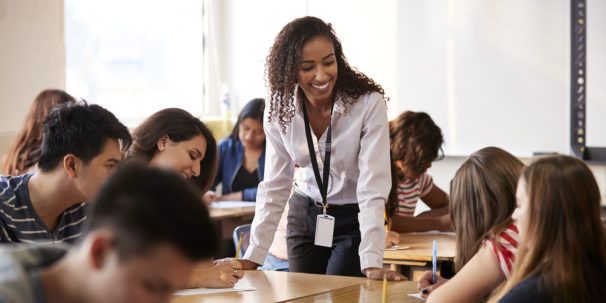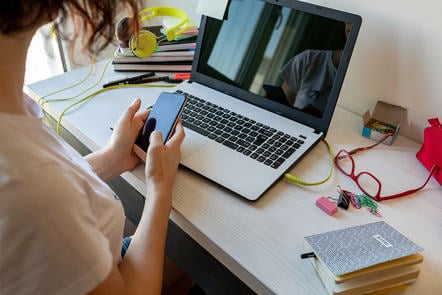6 effective teaching methods and how to use them
We discuss 6 of the most effective teaching methods so that you can discover which teaching style suits you and your subject area best.

As we explored in our recent World Teachers Day blog post, teachers are a completely essential part of our society, but teaching can be a difficult and stressful job at times.
Particularly when working with children and teenagers, it can be hard to retain focus, manage behaviour, and encourage active participation. In addition, teaching adults can have its own challenges – it can be difficult for adult learners to absorb new things and change old thinking patterns.
One thing that may help you deal with some of these challenges is learning about the different teaching methods available. You don’t need to pick one method and stick to it, but you may find that certain methods and styles are perfect for different learning environments.
For example, you might find that student-centred learning is perfect for KS2 children, and game-based learning works wonders for KS3. You may discover that using technology such as VR can elevate history and geography lessons, while experiential learning methods can be effective during science experiments and group projects. To find out more, read about our top 6 most effective learning methods below.
1. Online learning
Teaching online may not have been the norm for most teachers before the COVID-19 pandemic, but there have always been some teachers who prefer to work online. Online tutors often enjoy the freedom of working from home, choosing their working hours, and being their own boss.
But what exactly does teaching online consist of? Essentially, it’s the process of educating others using the internet, whether that’s through individual or group video calls, webinars, or messaging platforms. Normally it’ll be a combination of things to keep students engaged.
If you’re thinking about teaching online, or your current job requires you to teach online, you’ll need to be comfortable with technology and the internet. This is because all of your communication will be online, and you’ll need to create digital resources for your students. These resources might be presentations, lesson plans, worksheets, videos or audio lectures.
The great thing about online learning is that it’s accessible to many people. Not everyone is able to go to school, but more people have access to the internet. Of course, technology can be a barrier to education too, but as the years go by, this barrier is, fortunately, breaking down.
The best place to start if you want to learn how to be an excellent online teacher is our highly rated How To Teach Online: Providing Continuity for Students course. You’ll learn how to successfully move from face-to-face teaching to online teaching so that you and your students get the most out of learning.
2. Experiential learning
If you haven’t heard of experiential learning before, it’s the idea that learning is a product of experience. If it sounds like something that you might be interested in, we have a whole article that explores how to apply experiential learning in the classroom and beyond.
We can only gain experience from interacting and engaging with the world and people around us. This learning theory comes from David Kolb’s experiential learning cycle, and considers the role of all our experiences in learning, from emotions and cognition, to our environment.
Kolb’s 1984 theory suggests that there are four main stages in the learning cycle:
- Concrete experience. This is when the learner has a new experience, such as riding a bike for the first time.
- Reflective observation. After the concrete experience, the learner must reflect on their actions and watch others perform that action.
- Abstract conceptualisation. The next step involves the learner making sense of their reflections and making a plan for going forward. They might come up with next steps and seek insight from experts.
- Active experimentation. During the final stage, the learner will consider their reflections and previous lessons and then retry the original experience to see if any progress has been made. This will lead to a new concrete experience, and so the cycle restarts.
Experiential learning is a great teaching method because it encourages creativity, helps students learn from mistakes, fosters reflective thinking, and prepares students for future experiences. It can be effective for several subjects, especially during science experiments, sports coaching, and group projects.
Some simple ways to encourage experiential learning in your classroom include encouraging students to assess themselves regularly and reflect on what they’ve learnt. As a teacher, you might want to record yourself teaching or keep feedback journals so that you can reflect on previous lessons.
3. Differentiation
Differentiated learning is a teaching method that tailors instructions to students depending on their individual needs. This method could be a great option if you’re teaching mixed-ability classes and want everyone to get the most out of each lesson.
This is a fairly traditional approach to teaching mixed-ability classes, but it can be successful if managed sensitively. For example, some teachers may choose to teach entirely different content depending on student ability. However, this can cause students to feel embarrassed and teachers to feel burned out from trying to do too much at once.
On this note, it’s important for teachers to ensure that they create an inclusive classroom where students of all abilities are welcome, regardless of gender, race, sexuality or disability. Differentiated learning should never be used to make some students feel inferior to others.
A better way to approach differentiation is to teach in a variety of ways, including books, films, images, and verbal presentations. This gives different students the opportunity to get involved and understand the lesson content. You can even go further than that and offer differentiated class activities and assessment styles.
For example, if the class topic is a Shakespeare play, you could allow students to demonstrate their understanding in a number of ways. They could write an essay, give an oral presentation, create an illustration or comic, or play to any other strengths they have.
4. Blended learning
The next teaching method we’ll be exploring is blended learning. Essentially, blended learning is a combination of traditional face-to-face learning and technology-based learning. Although blended learning did exist before the COVID-19 pandemic, it’s become more popular with schools and universities in the two years. You can read all about it in our blended learning blog post.
Using a blended learning model can be great for both students and teachers because it forms a middle ground between traditional and technology-based methods. It uses enough technology to keep students focused and interested, but it also provides opportunities for students to talk in-person to teachers and fellow classmates, which can be invaluable.
Some great examples of blended learning include:
- Station rotation. Students rotate around different ‘stations’ during lessons, with these being a mixture of online and hands-on activities.
- Flex learning. Students are in class with teachers, but they primarily use online learning methods. Teachers are there for support and instruction whenever needed.
- Virtual Reality. Students are in a physical classroom but are able to use Virtual Reality (VR) to immerse themselves in an environment. This could be a historical landmark, art gallery, or natural wonder, with the aim of capturing their attention and furthering their learning.
- Enriched virtual learning. Activities and coursework are completed online using digital technologies, but students can arrange face-to-face sessions when required.
It’s likely that blended learning models will become more predominant as time goes on and our physical and digital lives become increasingly interlinked. If you’re looking for a short course on the subject, you might be interested in our Blended and Online Learning Design course by UCL, or our Making Blended Education Work course by the University of Edinburgh and EMBED.
You may also be interested in our Introduction to HyFlex Learning and Teaching course by the University of Southern Queensland, Australia, which focuses on the innovative HyFlex teaching approach, a combination of hybrid and flexible methods.
5. Game-based learning
If you want to focus on making your lessons more fun, engaging and interactive, then look no further. Game-based learning, also known as gamification, is a great way to engage students, particularly those in primary and secondary education.
The definition of gamification is a strategy that implements game-like elements into non-gaming activities to enhance motivation. Since children are very interested in games, from video games and mobile applications to simple playground and board games, this can be a great place to start.
As we explore in our blog post about gamification in education, playing video games has been linked to dopamine production. So, incorporating some ideas from video games into education can actually have positive effects on the mood of students, making them more determined to succeed.
However, it is worth mentioning that gamification shouldn’t necessarily be used in every context. Sometimes, lessons require more serious discussions. In addition, too much game-based learning is likely to remove some of the fun and increased motivation that children feel.
Here are some of the ways you can incorporate game-based learning into your lessons:
- Points systems
- Levels and progress bars
- Challenges and competitions
- Unique rewards
- Learning badges
You can find out more about Learning through Play in our course by Federation University.
6. Student-centred learning
You can probably guess what this approach focuses on – your students. While the success and happiness of students is always a high priority for teachers, student-centred learning is different to more traditional teaching methods.
Teacher-centred learning, which is more common, requires the teacher to give classroom instructions and lead the class for the majority of the time. With student-centred learning, students are given more opportunities to choose what they want to learn and how they want to learn it. This is also known as personalised learning.
In student-centred learning approaches, students are encouraged to take an active role in the classroom, rather than taking part in more passive activities like listening to a lecture or writing an essay. They will have lots of discussions with their peers and teachers, and they’ll also be encouraged to ask questions, which is linked to inquiry-based learning.
Some great examples of this kind of approach include students taking part in debates, small group projects, and fun roleplay scenarios together. As a teacher, it’s your job to be an excellent facilitator. You should encourage open communication, curiosity, creativity and exploration. At the end of a classroom activity, the teacher should urge students to reflect on what they’ve learnt.
Final thoughts
Hopefully, this list of effective teaching methods has given you some ideas to bring to the classroom. You’ll find further details on many of these topics, as well as many more, with our teaching courses. These can help you work on some of the skills that can improve your lesson planning and execution, benefiting you and your students.









